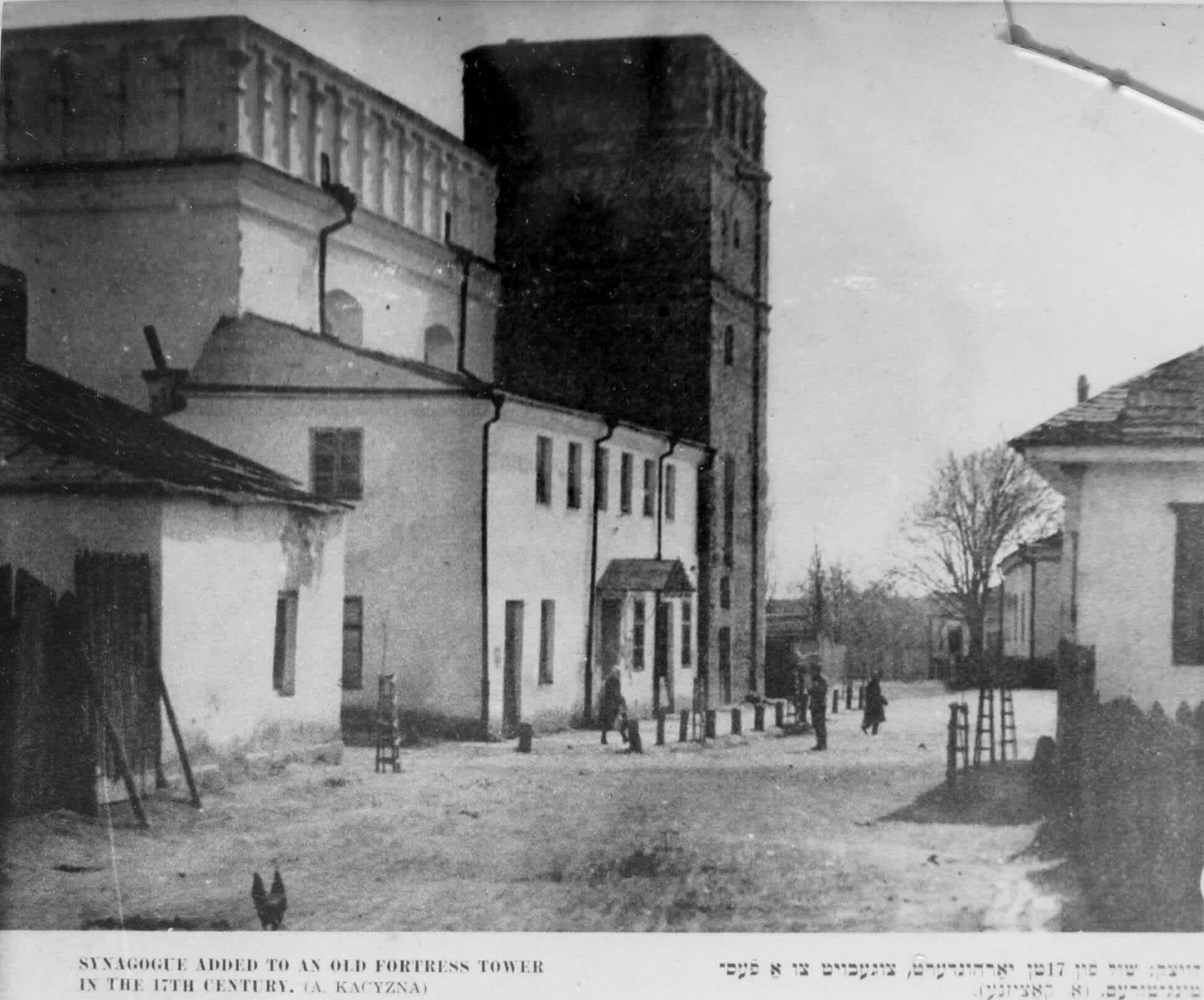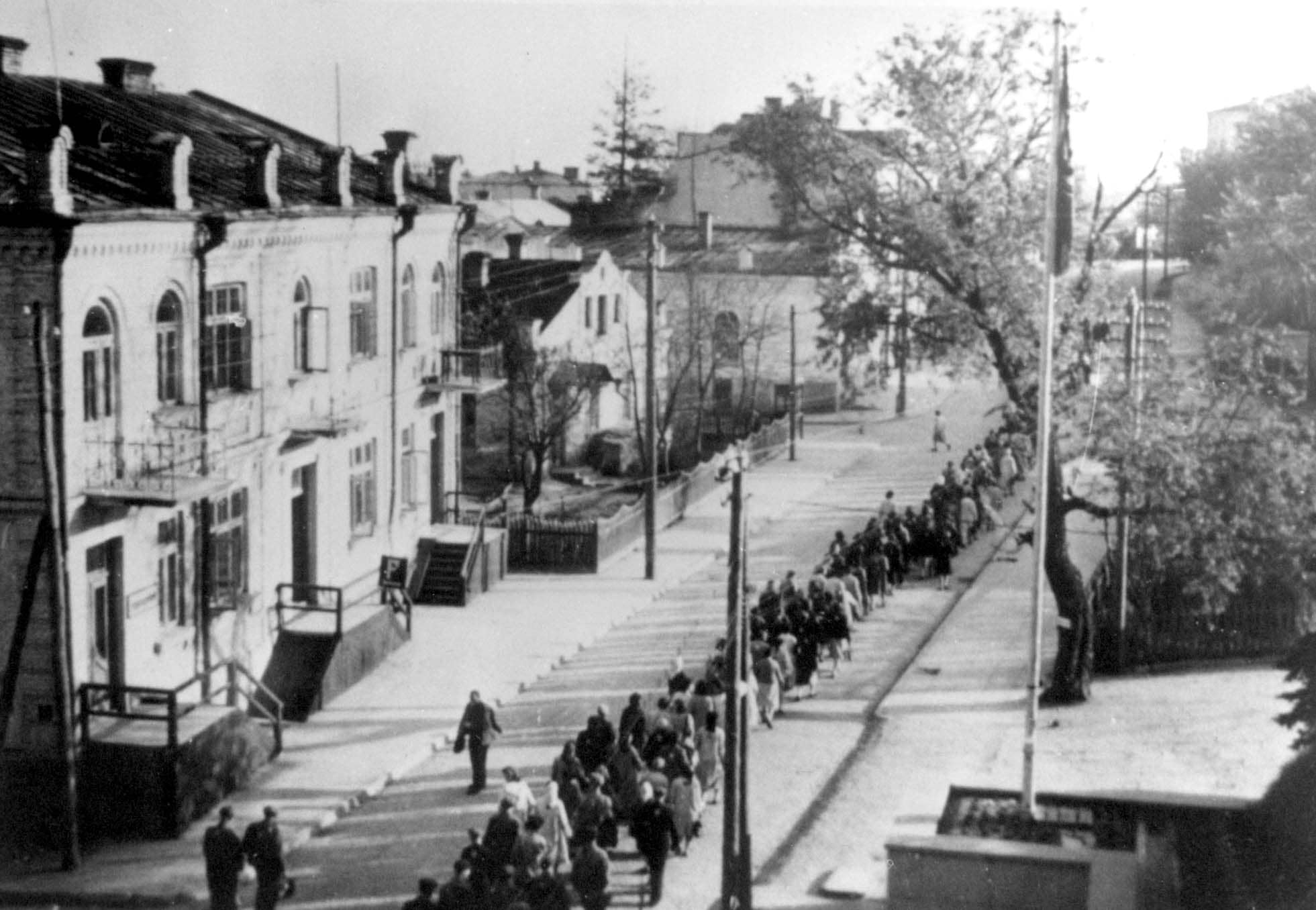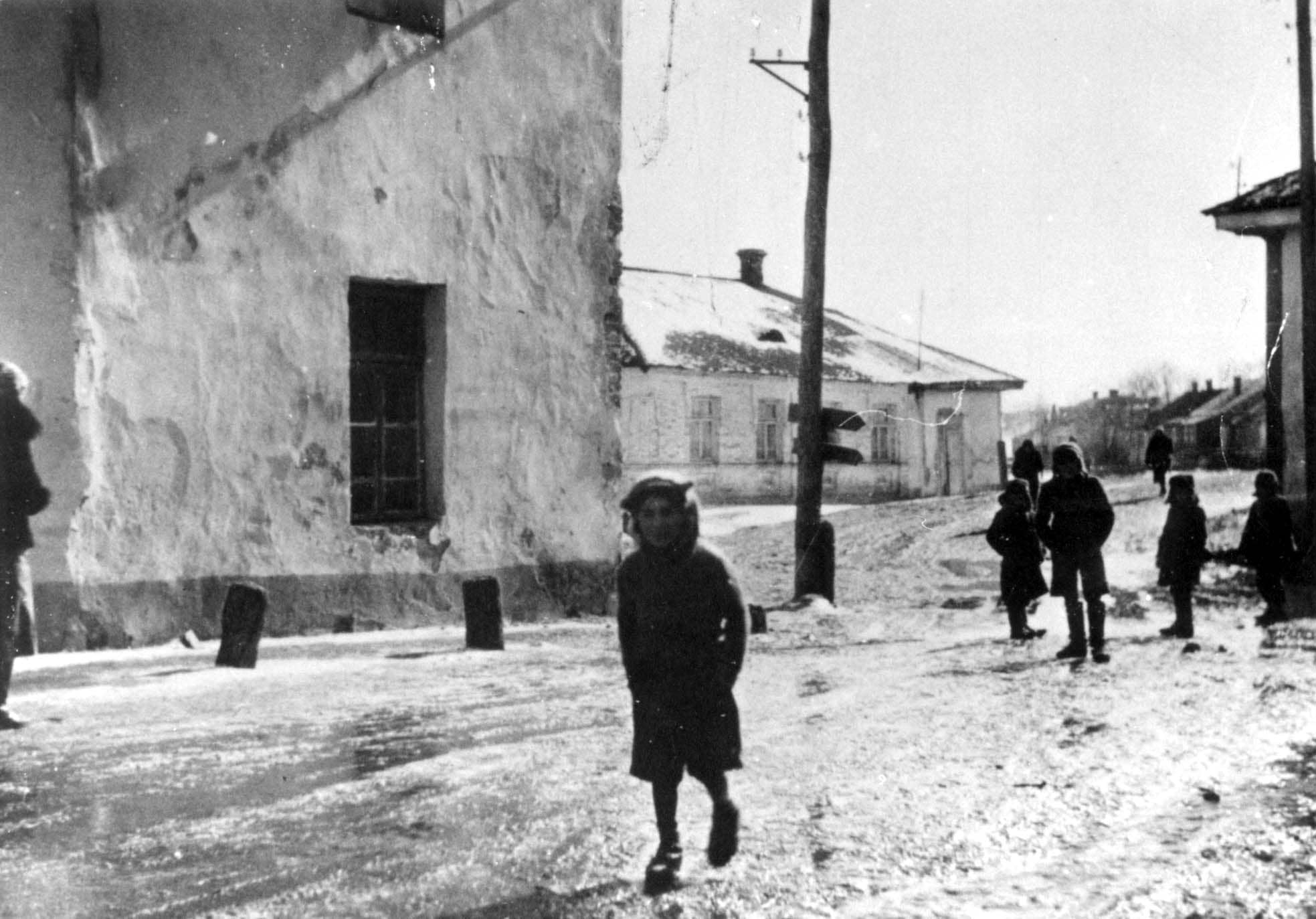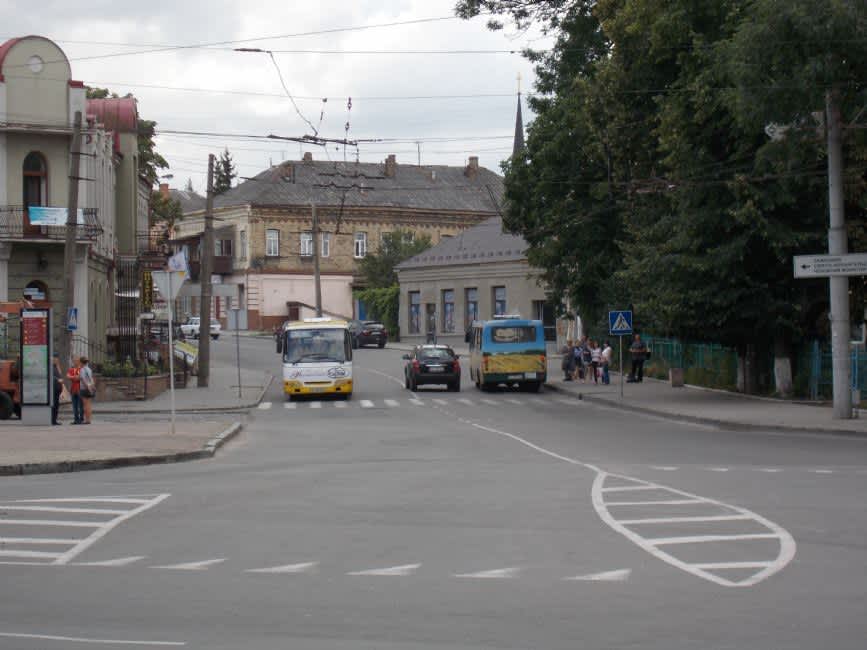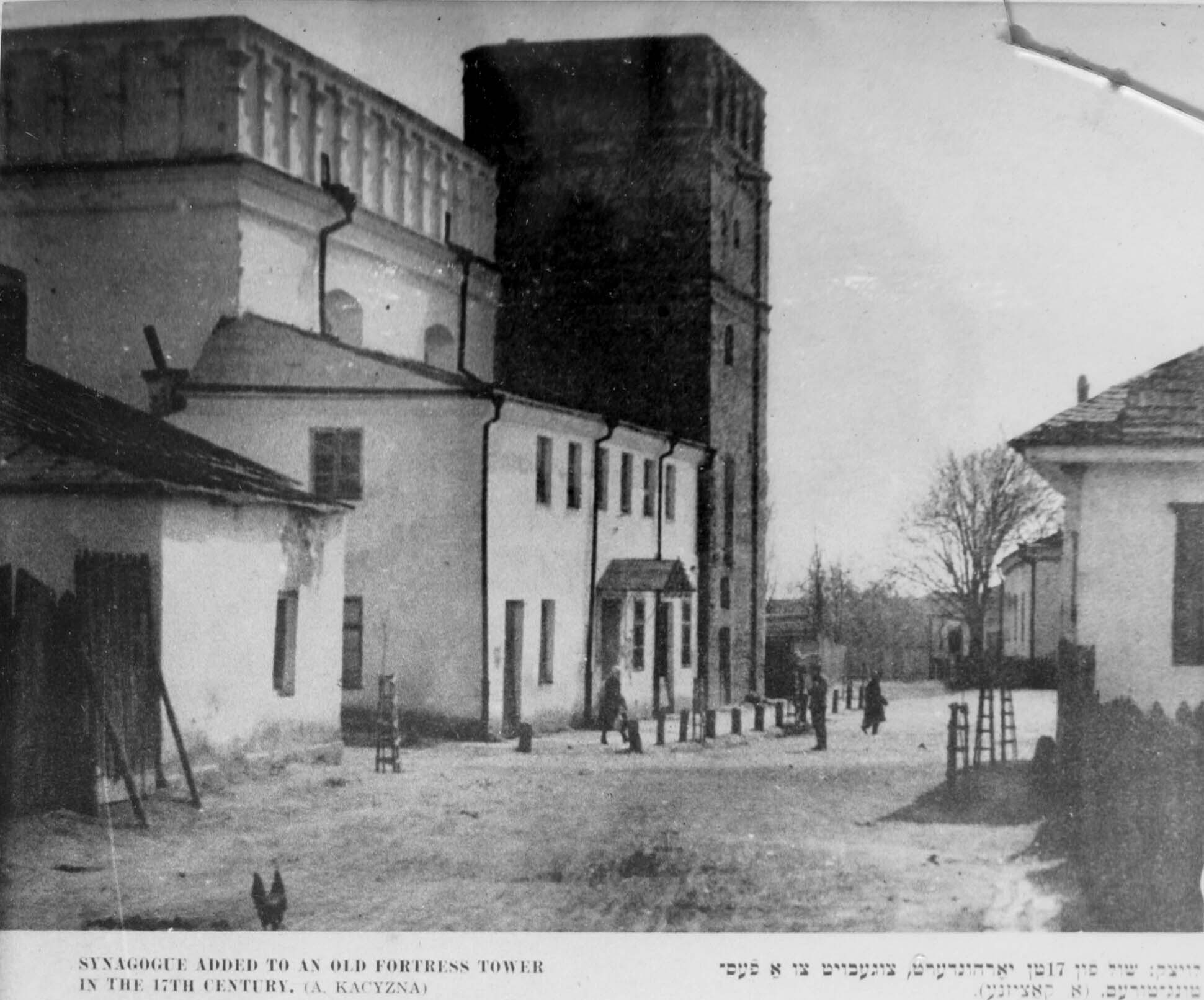

Luck

In September 1939 with the arrival of the Red Army in the city, following the Ribbentrop-Molotov Pact, Łuck became part of the Soviet Ukraine. During this period many Jewish refugees from western parts of Poland settled in the city. Soviet rule of the city was accompanied by the nationalization of Jewish businesses and the closure of Jewish political and public institutions. Many dozen Jews, viewed by the Soviets authorities as opponents of the regime, were deported to Kazakhstan or Siberia. In 1941 19,500 Jews were living in Łuck.
The Germans occupied Łuck on June 25, 1941. Very few Jews managed to flee the city in time. The city was bombarded from the first day of war. On the next day Ukrainian residents, stirred up by the Germans, staged a pogrom, during which several Jews were killed and many wounded. The Germans discovered that NKVD personnel had murdered about 2,800 prisoners in Łuck, many of them Ukrainians. On June 30, 300 Jewish men and on July 2, another 1,160 were shot to death in the Lubart fortress in the city by SS and Wehrmacht units as a reprisal for the murder of the Ukrainians and German soldiers. From the first weeks of the occupation the Jews were forbidden to use the sidewalks and permitted to shop in the market-place only between certain hours. Many Jews were abused and the beards and side-locks of religious Jews were forcibly torn or cut off. Łuck was the center of Gebiet Łuck, headed by Gebietskommissar (regional commissar) Heinrich Lindner. As of August 1941 all Jews had to wear a white armband; this was replaced in September by two yellow patches, one to be worn on the chest and the other on the back. In late July 1941 a ten-member Judenrat (Jewish council) was appointed and a Jewish police force was established.
In October 1941 about 500 young Jews (including several women) were sent to work at the labor camp administered by the SS that was set up in the Krasne neighborhood on the outskirts of the city. On December 11-12, 1941, on the order of the Gebietskommissar, the approximately 19,000 Jews of Luck were concentrated in a ghetto that had been set up on the territory of the old town and some parts of the poor Jewish neighborhood of Gnidawa. The Jewish council was required to supply daily labor brigades to perform jobs outside the ghetto. During the first months of the ghetto's existence the Germans took hostages to guarantee that the local Jews would hand over money, valuables, furniture, warm clothing, and other items. Poor conditions in the ghetto, the cold, epidemics, and starvation led to a high mortality rate. The Judenrat operated a soup kitchen, an orphanage, a home for the elderly, and a hospital - in an effort to ease the suffering of the ghetto inmates.
On August 20-23, 1942 between 15,000 and 17,000 Jews from the ghetto were shot to death at Gurka Polonka outside the city. Over the following days and weeks several hundred more Jews, who had been caught in hiding, were killed at the site as well. Apparently at the very end of August, a small ghetto set up in the Gnidawa neighborhood held a group of about 300 Jewish survivors, including the medical staff of the hospital. Probably in the first half of September, the inmates of the ghetto, along with a group of Jews who had snuck into the Krasne labor camp after the liquidation of the main ghetto, were shot to death at Gurka Polonka. Before the ghetto was liquidated, dozens of Jews went into hiding with the help of local non-Jewish residents, among them Witold Fomienko who was later recognized by Yad Vashem as a Righteous Among the Nations.
In the fall of 1942 the Krasne labor camp was relocated to the grounds of the former Jewish secondary school on Bolesław Chrobry(the Brave) Street. On December 12, during the liquidation of the labor camp, the inmates organized resistance. Almost all of them fell in battle or were murdered; only several dozen Jews survived and were handed over to the Germans and murdered at Gurka Polonka.
Łuck was liberated by the Red Army on February 5, 1944.

